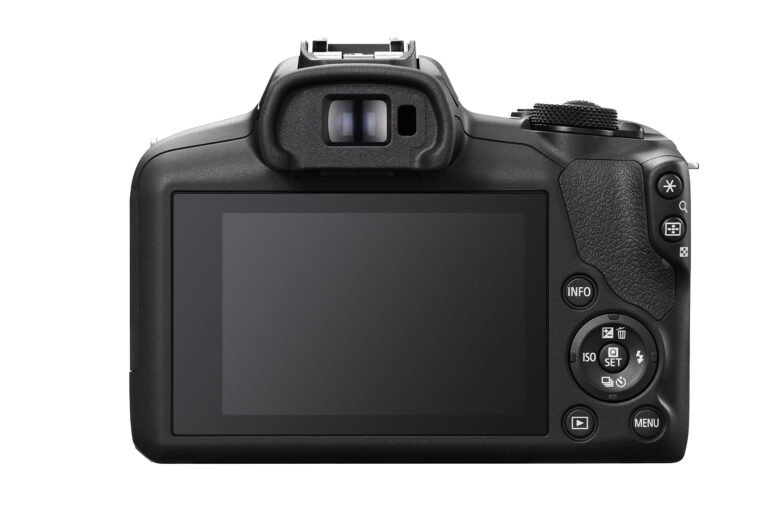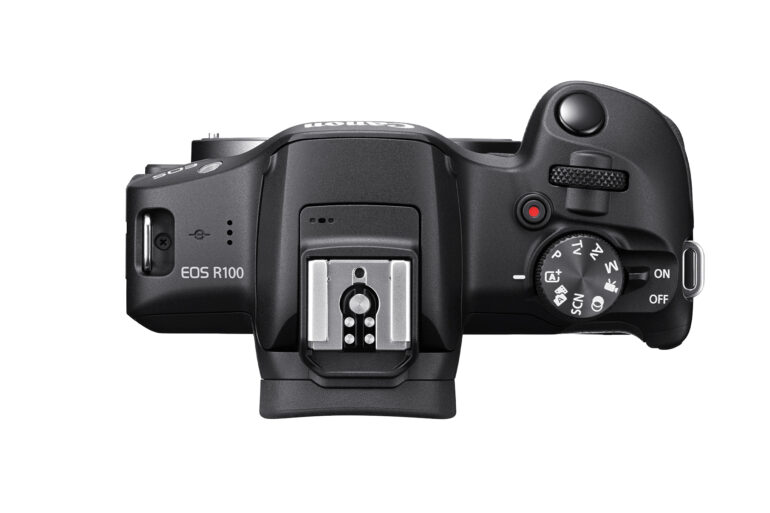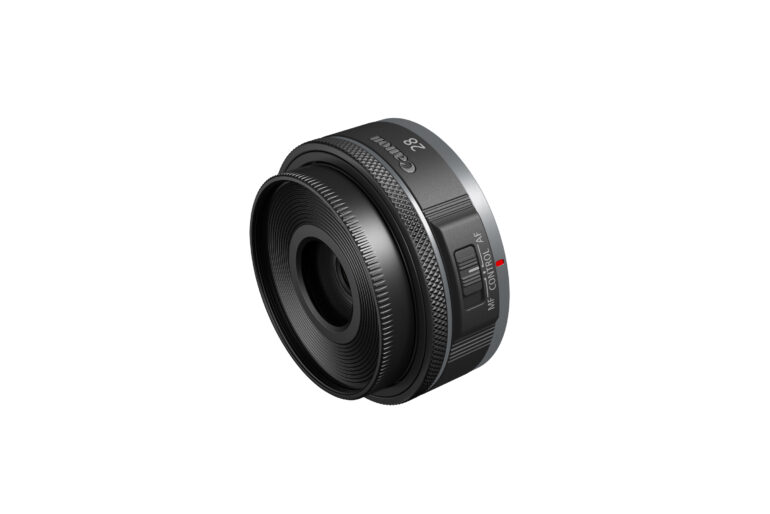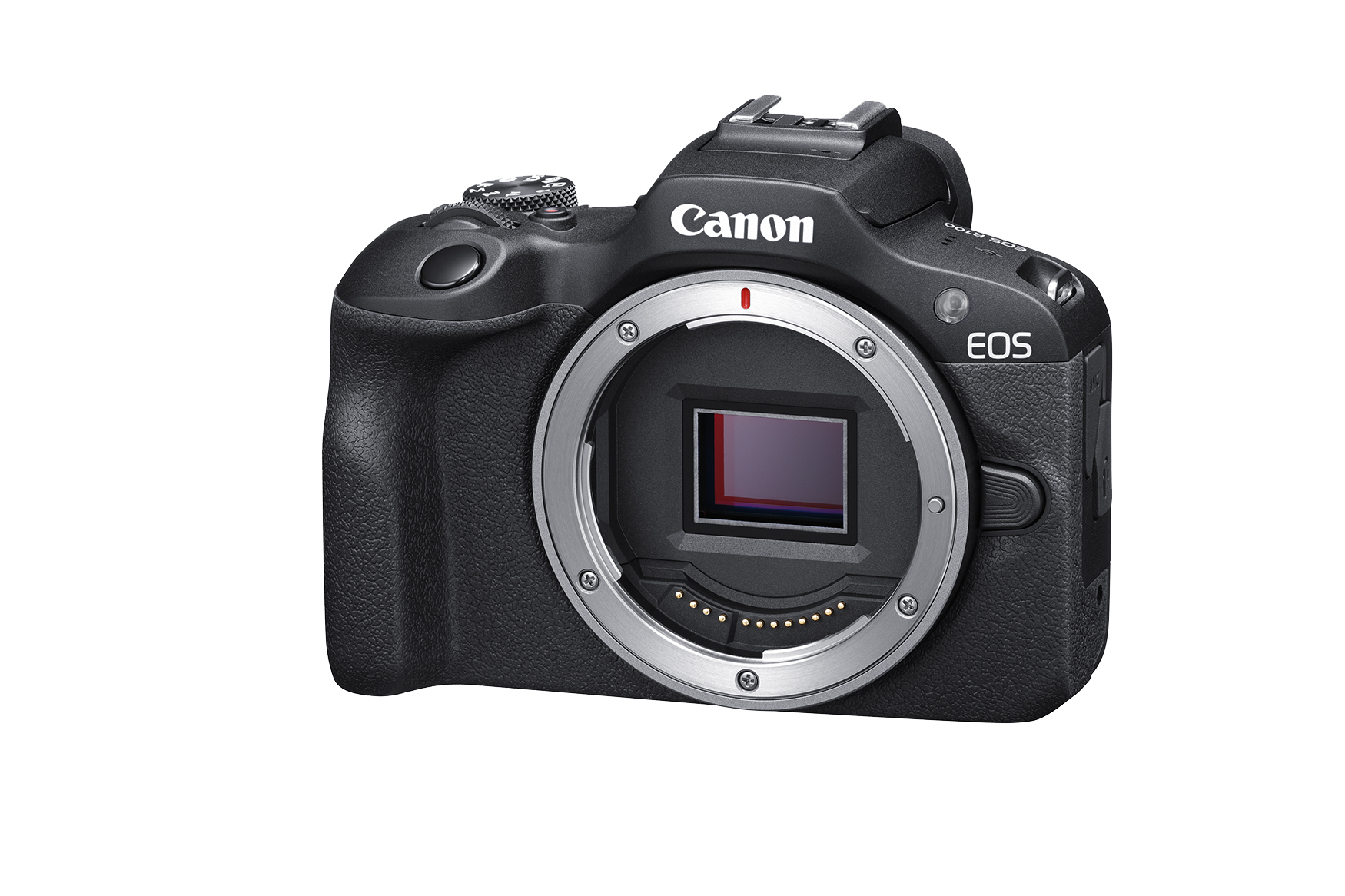Last Updated on 05/26/2023 by Chris Gampat
Canon has launched its smallest, lightest, and cheapest RF mount body yet. Meet the Canon EOS R100, a $480 mirrorless camera that, despite being launched today, May 24, 2023, already feels old. That’s because it’s essentially a slower, RF-mount version of the M50 Mark II. It has the same 24.1-megapixel sensor and DIGIC 8 process as the M50 Mark II — and the five-year-old original M50 also carries that same resolution and processor. The Canon EOS R100 has a few small things to get excited about, like the price and the fact that it’s possible to automatically upload photos to Google Photos or Lightroom. But, more Canon fans will likely get excited about the lens announced today: the Canon RF 28mm f2.8 STM, a $299 pancake lens.
Canon EOS R100 Key Features
- 24.1 megapixel APS-C sensor
- DIGIC 8 Processor
- Dual Pixel autofocus with eye, face, and body detection
- Fixed three-inch non-touchscreen
- 2.36 million dot electronic viewfinder
- 3.5 fps with continuous autofocus (servo), 6.5 fps with single focus
- Like the R50, the R100 is an electronic 1st curtain shutter.
- Compatible with RF lenses. The RF adapter to use DSLR lenses also works but the control ring on the adapter won’t work when mounted on this camera.
- Streaming and webcam use is not supported.

The Canon EOS R100 takes over as the entry-level body for the RF series. It has fewer features than the R50, including slower speeds and no flipping touchscreen. The burst speed with continuous autofocus is only 3.5 fps, which is slow even for a budget camera. It also lacks one of the best reasons to choose the R50 over other budget cameras: animal eye AF detection. The only eye AF detection on the R100 is for humans.

Canon is targeting smartphone photographers wanting to improve image quality with the R100. It sits along the same lines as the Canon T7 DSLR series and the M50 mirrorless cameras, though Canon was careful to stress that the R100 isn’t replacing any of those models. But, the R100 lacks a touchscreen, which would have gone a long way in easing smartphone photographers into the transition to a mirrorless camera. It also lacks stabilization, which isn’t terribly surprising for the price, but is a feature that goes a long way for beginners.
The camera also isn’t weather-sealed — which, again, isn’t surprising at this price point. However, it also lacks a dust shake-off self-cleaning sensor and doesn’t have a shutter that will to close over the sensor during lens swaps. It does, however, have the ability to take a reference photo and automatically erase dust spots using software.
Honestly, the most exciting thing about the R100 is the price point — it’s going to list for $479 and change body-only or $599 with an 18-45mmm lens or $829 for a two-lens kit. Price is one of the few advantages some DSLRs still have over mirrorless, and the R100 is a bargain. The ability to set up automatic transfers to Google Photos will appease the smartphone crowd for simpler sharing — and it can also upload to Lightroom or frame.io.
But, more beginners will want to spend the extra $200 to get the R50, which is nearly five times faster and has a tilting touchscreen and animal eye detection. Or, buy a more advanced used camera or an older model of a more advanced camera. Yes, the R100 is super cheap, but the tech inside is already outdated at launch unless newbies really want those automatic uploads to Google Photos.
Canon RF 28mm f2.8 STM

The Canon RF 28mm f2.8 STM could get some RF Mount shooters excited — and rightfully so. The 28mm is a pancake lens that weighs 4.2 ounces, which Canon jokes is small enough to use as a body cap. It’s also only $299.
The lens isn’t one of Canon’s high-end L series optics. But the price, small size, and bright f2.8 aperture will likely make the lens a great option for beginners and intermediate photographers. While small, it still makes room for a control ring and an AF-MF switch. The small size will also make it an enticing choice to just keep on the body whenever size and weight is a concern — the 28mm is wide enough for landscapes but also usable for other genres like street or even environmental portraits. The lens can focus from about nine inches away.
Both the Canon EOS R100 and the RF 28mm f2.8 are expected to begin shipping in July 2023.


